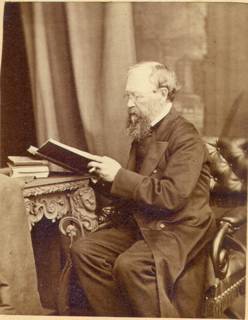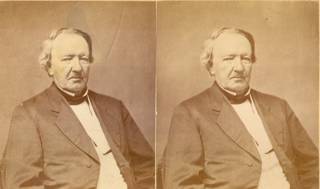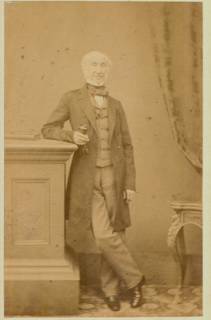Amos Eaton (1776-1842) was one of the early 19th Century American naturalists who contributed to several branches of science at a time when specialization was in its infancy. He authored texts in botany, chemistry, and geology. He was one of the founders of
Rensselaer Polytechnic Institute, and was the mentor of more than a few scientists who would achieve prominence in the following generation. Included among these was John Torrey.
Eaton's
Manual of Botany For the Northern and Middle States went through eight editions between 1817 and 1840. Because no publisher was willing to undertake the risk, the first edition of June, 1817 was issued "in a contracted form" of 164 pages by Eaton's 61 students at Williams College. The 500 copies sold out within six months. Not surprisingly, Eaton had a better reception when he approached
Websters and Skinners publishing house in Albany in 1818 with the enlarged (524 pages) second edition. This edition, also believed to be a run of 500 copies, sold out in less than two years.
In August 1817, Eaton's former pupil, John Torrey, one of the founders of the newly formed
Lyceum of Natural History of New York, proposed him as a corresponding member. (The constitution of the Lyceum of Natural History of New York had been signed by the twenty-one charter members at the first meeting of the society, held on February 24, 1817. It is the fourth oldest existing scientific society in America, preceded only by:
The American Philosophical Society [1743],
The American Academy of Arts and Sciences [1780], and
The Academy of Natural Sciences [1812].) On September 22, 1817 Eaton was elected and presented with this
Diploma of membership. Eaton apparently took significant pride in this accolade, because he notes the fact under his name on the
title page of the 1818 edition of the
Manual of Botany.
It does not come as a surprise, therefore, that Eaton would have presented a copy of this book to the Lyceum, which was just then beginning to form a library. As it turns out, the library was comprised largely of books loaned by members and subsequently withdrawn, so that even after seven years, in 1824, the number of books actually owned by the society was still less than two hundred. Whereas all of the Lyceum's cabinets of natural history were ultimately lost by fire in 1866, the library, which had been housed elsewhere, survived. In 1876 the Lyceum was renamed
The New York Academy of Sciences. In 1903 the Academy donated the library to the
American Museum of Natural History.
Here is the title page of the presentation copy of the second edition of the
Manual of Botany,
inscribed by Amos Eaton to the fledgling Lyceum of Natural History of New York. It also bears the stamp of the successor Library of The New York Academy of Sciences, but then somehow traveled to Eastern Europe where it became part of the library (knihovna) of Prague geobotanist, taxonomist and morphologist
Karel Domin (1882-1953), bearing his stamp (using his Latinized name,
Karla Domina). The circular stamp of the Department ("Odd." = oddělení) of Botany of the National ("Narod." = národní) Museum of Prague is also on the page.
Eaton held steadfast to the archaic artificial sexual classification of Linnaeus long after his protege, John Torrey, had introduced the Natural System of Jussieu and De Candolle to America in 1831. This led to a direct confrontation between Asa Gray and Eaton in November, 1835 when their paths crossed at John Torrey's home in New York City. The 69 year old Eaton was left very nearly speechless by the harsh criticism and ridicule levelled at him by the upstart Gray, only age 25 at the time. How ironic that Gray was soon to have charge over this copy of the book when he was appointed Librarian of the Lyceum in February, 1836.
It is puzzling that Eaton, who was so progressive in advocating a new nomenclature for the strata and secondary rocks of New York, should have so stubbornly refused to adapt to the improved system of botanical taxonomy.
Of the third, fourth, fifth, sixth and seventh editions of the
Manual, 2000 copies each were sold. The eighth edition of 1840 was a printing of 2500. The total number (13,500) of copies of Eaton's
Manual surely ranks it as one of the most successful of early American botanies.



